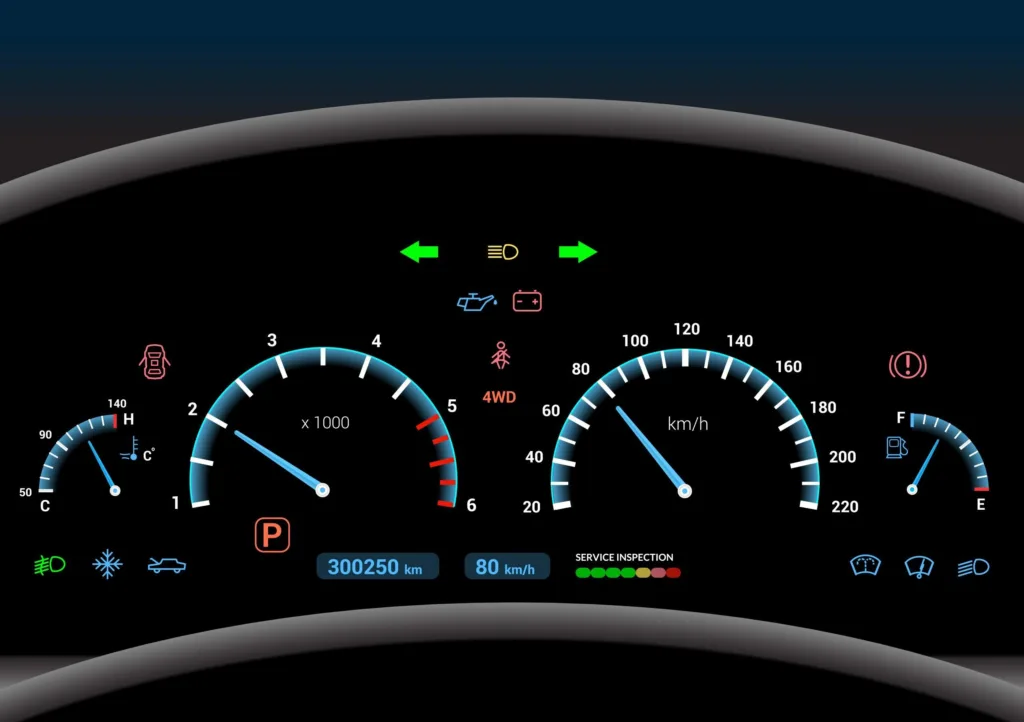Abstraction is a fundamental concept in computer science and software engineering. It refers to the process of hiding complex implementation details and exposing only the necessary information to the user. Abstraction allows us to simplify complex systems and make them easier to use and understand. However, abstraction is not limited to the world of computer science. In fact, abstraction is present in our daily lives, and we often use it without even realizing it.
One of the most common examples of abstraction in daily life is driving a car. When we drive a car, we don’t need to know how the engine works or understand the mechanics of the transmission. All we need to know is how to turn the key, press the gas pedal, and use the brakes. The internal workings of the car are abstracted away from us, and we are only exposed to the necessary information.
Another exampe of abstraction in daily life is using a coffee machine. When we use a coffee machine, we don’t need to understand the complex process of brewing coffee. All we need to know is how to add water and coffee beans, select the type of coffee we want, and press a button. The internal workings of the coffee machine are abstracted away from us, and we are only exposed to the necessary information.
ATM machines are also an excellent example of abstraction in daily life. When we use an ATM machine, we don’t need to understand the complex process of how money is withdrawn from our bank account. All we need to know is how to insert our ATM card, enter our PIN code, and select the transaction we want to perform. The internal workings of the ATM machine are abstracted away from us, and we are only exposed to the necessary information.
Abstraction is not only useful in simplifying complex systems, but it also contributes to security. By abstracting away the internal workings of a system, we can protect it from unauthorized access. For example, a bank may abstract away the internal workings of its ATM machines to prevent hackers from accessing sensitive information.
Abstraction is a fundamental concept that is present in our daily lives. It allows us to simplify complex systems, make them easier to use and understand, and protect them from unauthorized access. The examples of abstraction in daily life are numerous, and we often use it without even realizing it. By understanding the concept of abstraction, we can appreciate its importance and use it to our advantage.
Examples of Abstraction in Real Life
Abstraction is a fundamental concept in computer science that involves the process of simplifying complex informtion to make it more manageable. However, abstraction is not only limited to the world of computing, but it can also be observed in our daily life. A great example of abstraction in the real world is using a coffee machine to make coffee. The coffee machine abstracts away the complicated process of making coffee by providing a simple interface for the user to interact with. Instead of having to boil water, grind coffee beans, and filter the coffee, the user only needs to provide water and coffee beans, switch on the machine and select the desired type of coffee. By abstracting away the complexities of coffee making, the coffee machine makes the process more efficient and user-friendly. This example illustrates how abstraction can simplify complex processes in the real world, making them easier to understand and use.

The Use of Abstraction in Everyday Life
Abstraction is a fundamental concept that humans use in ther day to day life to simplify complex tasks and information. It involves focusing only on the essential features of an object, process or system and ignoring the irrelevant details to help us understand and interact with it more efficiently.
One of the most common examples of abstraction in everyday life is the use of technology. For instance, when we use a smartphone, we do not need to know how the device’s hardware and software work internally to make a phone call or send a text message. Instead, we interact with the device through a simplified user interface that abstracts away the underlying complexity.
Another example of abstraction is the use of language. We use words to represent complex ideas and concepts, allowing us to communicate and understand each other more effectively. For example, when we say “car,” we are abstracting away all the details of how the car works, from the engine to the transmission to the brakes, and instead focusing on the essential idea of a vehicle that can transport us from one place to another.
Abstraction plays a crucial role in our day to day life by simplifying complex tasks and information, enabling us to interact with the world more efficiently and effectively.
The Benefits of Abstraction
One of the best examples of abstraction is the use of a computer mouse. The mouse is a device that allows users to interact with a computer system by moving the pointer on the screen and clicking on various icons and buttons. However, the user does not need to know how the mouse works, what type of sensors it uses, or how it communicates with the computer. This complexity is abstracted away from the user, who is able to focus on the task at hand wihout worrying about the underlying technology. The mouse is a simple and intuitive tool that has become an essential part of modern computing, demonstrating the power and importance of abstraction in technology.
The Benefits of Using Abstraction in Real Life
Abstraction is a powerful concept in real life that helps us simplify complex systems and focus on the essential details that matter. In many real-life scenarios, we encounter complex systems and processes that are difficult to understand and manage. By using abstraction, we can hide the complex details and focus on the high-level functionality of the system.
One of the main reasons why we use abstraction in real life is to reduce complexity. Abstraction allows us to break down complex systems into simpler, more manageable components. By hiding the details that are not relevant to the task at hand, we can focus on the essential features of the system and make it easier to understand and use.
Another reason why we use abstraction is to promote modularity and reusability. When we abstract a system, we create a clear separation between the interface and the implementation. This makes it easier to change the implementation without affecting the interface. It also makes it easier to reuse components in other systems, sine the interface remains the same.
Abstraction also helps us to improve security and privacy. By abstracting sensitive data and hiding it from unauthorized users, we can protect our systems and prevent unauthorized access. This is particularly important in systems that deal with sensitive information such as financial transactions, medical records, and personal data.
Abstraction is an essential concept in real life that helps us simplify complex systems, promote modularity and reusability, and improve security and privacy. By using abstraction, we can focus on the essential features of the system and make it easier to understand, manage, and use.
Understanding Abstraction and Examples
Abstraction is a fundamental concept in computer science and software engineering that involves presenting only the essential inormation and hiding the underlying details. Data abstraction is a specific type of abstraction that focuses on providing essential information about the data while hiding the implementation details.
A classic example of data abstraction is a car dashboard. A driver only needs to see essential information like speed, fuel level, and engine temperature, while the underlying processes and systems that make the car run are hidden from view. In this case, the dashboard abstracts the complex systems of the car, making it easier for the driver to focus on driving safely. Similarly, software engineers use data abstraction to simplify the complexity of the software they build, making it easier to understand, modify, and maintain over time.

The Use of Abstraction in Phones
A phone is an example of abstraction. When we use a phone, we interact with its user interface and functionalities, such as making calls, sending messages, taking pictures, and uing apps. However, we do not directly interact with the phone’s hardware or software components, which are complex and intricate. Instead, we rely on the phone’s abstraction layer, which hides the underlying complexity and presents a simplified and user-friendly interface. This abstraction layer allows us to use the phone without needing to understand its internal workings. Therefore, a phone is a great example of abstraction in technology, where we interact with a simplified version of a complex system, without having to know all the details of how it works.
Applying Abstraction
Abstraction is a fundamental concept that is widely used in various disciplines, including art, mathematics, engineering, and computer science. In art, abstraction refers to the representation of a subject matter in a simplified, non-representational form, emphasizing the visual elements and principles of design. In mathematics, abstraction is used to generalize concepts and ideas beond specific examples, allowing for the development of new theories and applications.
In engineering, abstraction is applied to complex systems to simplify their design and management. By breaking down a system into smaller, more manageable parts, engineers can focus on specific aspects of the system and develop solutions that are more efficient and effective. This approach is widely used in fields such as electrical engineering, mechanical engineering, and civil engineering, among others.
In computer science, abstraction is a critical concept used to develop software applications and systems. It refers to the process of hiding complexity and technical details behind a simplified interface or model. This allows developers to create software that is more flexible, reusable, and scalable, without having to worry about the underlying technical details of the hardware or operating system.
Abstraction is a powerful tool that can be applied to a wide range of disciplines and applications, enabling professionals to develop more efficient and effective solutions to complex problems.
Examples of Abstraction in Everyday Life
One example of an abstraction in my everyday life is using a credit card. While I understand the basic concept of swiping it to make a purchase, I don’t fully understand the complex network of electronic transactions that happen behind the scenes. Despite this lack of understanding, I still use my credit card with confidence because I trust the system to work reliably and securely. I rely on the abstraction of the credit card as a convenient and secure way to make purchases without having to carry cash or worry about the details of the transaction process.
The Concept of Abstraction in Humans
In human, abstraction refers to the ability to think beyond the concrete, physical world and understand concepts that are not directly observable. It involves the process of generalizing specific instances and creating mental models or representations of complex ideas. Abstraction is a crucial cognitive skill that alows humans to develop and communicate new ideas, theories, and inventions. It is also a fundamental aspect of many creative endeavors such as art, music, and literature. In essence, abstraction is a higher-level thinking process that enables humans to understand and manipulate the world around them in ways that are not limited by physical constraints.

Source: plos.org
Types of Abstraction
There are three main types of abstraction: descriptive, informative, and critical.
Descriptive abstracts provide a brief summary of the main points of a research article or paper, without giving any interpretation or evaluation of the content. These abstracts are often used in academic journals and databases to help readers quickly identify whether an article is relevant to their research interests.
Informative abstracts, on the othr hand, provide a more detailed summary of the main points of a research article or paper, including the purpose, methods, results, and conclusions. These abstracts also often provide some interpretation or evaluation of the content, but without offering any personal opinions or biases.
Critical abstracts provide a comprehensive summary of the main points of a research article or paper, as well as a critical evaluation of the content. These abstracts offer the author’s personal opinions and biases, and may also critique the methodology, results, or conclusions of the research.
The choice of which type of abstract to use depends on the purpose of the article or paper, as well as the intended audience. Descriptive abstracts are useful for quickly identifying relevant research, informative abstracts are helpful for understanding the main points of a research article, and critical abstracts are valuable for providing a more comprehensive evaluation of the content.
Understanding Simple Abstraction
Simple Abstraction is a unique collection of carpet tiles that are designed to create artistic canvases on the floor. The designer defines the canvas by combining various textures, selecting colors and adding marks to the tiles. These tiles provde a flexible and customizable option for interior designers to create unique and personalized flooring designs. The concept behind Simple Abstraction is to allow designers to express their creativity by transforming the floor surface into a work of art. This innovative and contemporary approach to flooring design has gained popularity in modern interior design projects, as it offers a fresh and dynamic way to add a unique touch to any space.
Examples of Abstract Concepts
Two examples of abstract concepts are emotions and metaphors. Emotions are subjective experiences that are often difficult to quantify or measure. Examples of emotions include love, fear, joy, and anger. Metaphors, on the other hand, are a type of figurative language that compares two things that are not literally related. Metaphors are often used to convey abstract concepts in a more tangible way. For example, the phrase “time is money” is a metaphor that compares the value of time to the value of money. Abstract concepts like emotions and metaphors are important becuse they allow us to communicate complex ideas and experiences in a way that is meaningful and relatable to others.
Understanding the Concept of Real Abstraction
Real abstraction is a concept coined by Alfred Sohn-Rethel in his book Intellectual and Manual Labour (1978). In essence, it refers to the process by which people in the act of exchanging commodities abstract from their use value. This means that individuals do not consider the practical utility of a good when they exchange it for money or another commodity, but rather focus solely on its exchange value. Real abstraction is a fundamental aspect of capitalist market economies, where goods are produced for exchange rather than for their direct use value. Although individuals may not be consciously aware of this process, it has significant implications for how economic systems function and how people relate to one another and to commodities. Real abstraction has been studied extensively within Marxist and critical theory, and its implications continue to be debated by scholars today.

Source: artnews.com
Unique Uses of Abstraction
Abstraction is a powerful tool that can be used in varius fields to simplify complex ideas and make them more manageable. Here are three unique uses of abstraction:
1. In computer science, abstraction is used to simplify complex algorithms and data structures by hiding irrelevant details and focusing on the essential features. This makes it easier to design and implement software systems, and also improves their performance.
2. In mathematics, abstraction is used to generalize concepts and create new theories. For example, the concept of a group is an abstraction that generalizes the idea of symmetry and allows mathematicians to study a wide range of mathematical structures.
3. In art, abstraction is used to represent ideas and emotions in a non-representational way. Artists use abstraction to simplify complex forms and create a visual language that communicates their ideas and feelings. This can be seen in various art forms such as painting, sculpture, and architecture.
Abstraction is a versatile tool that can be used in many different fields to simplify complex ideas and make them more accessible to a wider audience.
Real-World Examples of Encapsulation and Abstraction
Sure. Encapsulation and abstraction are two fundamental concepts of object-oriented programming that help in creating robust and maintainable software applications.
An excellent real-world example of encapsulation and abstraction can be seen in a car’s engine. The engine is encapsulated, which means all its internal components and workings are hidden from the user. As a driver, you only need to know how to start the engine, how to accelerate, brake, and shift gears. You don’t need to know how the engine works or what components it contains.
Abstraction is also used in a car’s dashboard. The dashboard displays only the essential information that a driver needs to know, such as the speed, fuel level, and engine temperature. It abstracts away all the technical details behnd the scenes, such as the number of RPMs, oil pressure, or voltage levels.
Encapsulation and abstraction are essential concepts used in software development to create modular, efficient, and easy-to-maintain code, and their real-world applications are widespread, including in car engines, dashboards, and other complex systems.
Conclusion
Abstraction is a fundamental concept in computer science that plays a significant role in our daily lives. It is a technique that allows us to focus on the essential details while hiding the complexity of the underlying system. Abstraction has numerous real-life applications, such as in the use of coffee machines, cars, and ATM machines, where it enables us to perform complex operations without haing to understand the intricate details of how they work. Moreover, data abstraction is also an important tool in ensuring the security of data from unauthorized access. As technology continues to evolve, the importance of abstraction will only increase, making it an essential concept for all computer scientists and users to understand.
